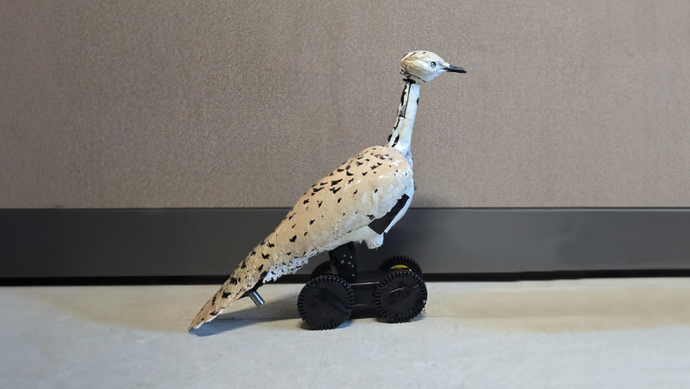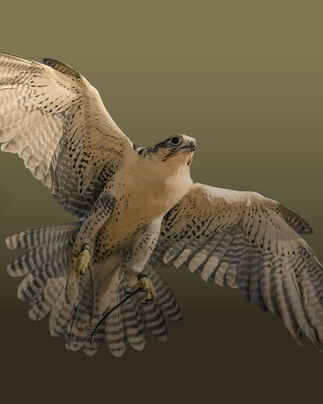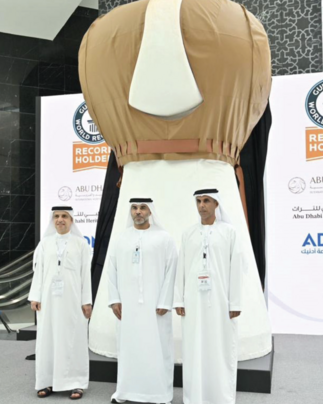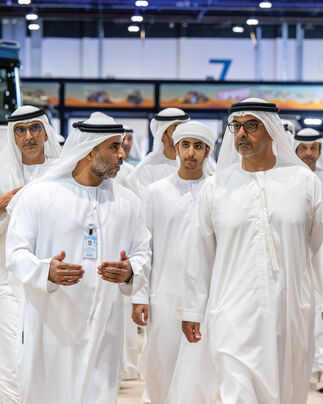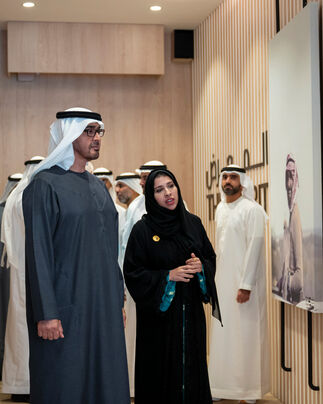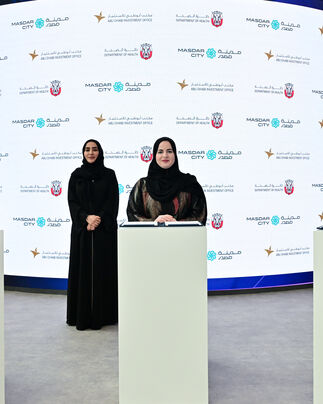The International Fund for Houbara Conservation (IFHC) and Khalifa University have showcased the Houbara Robot, Hubot, at the Abu Dhabi International Hunting and Equestrian Exhibition (ADIHEX) 2024, alongside other achievements inspired by the vision of the late Sheikh Zayed bin Sultan Al Nahyan and His Highness Sheikh Mohamed bin Zayed Al Nahyan, President of the UAE.
ADIHEX 2024, held under the patronage of His Highness Sheikh Hamdan bin Zayed Al Nahyan, Ruler's Representative in Al Dhafra Region at the Abu Dhabi National Exhibition Centre (ADNEC) from 31 August to 8 September 2024, saw broad local, regional, and international participation from hunting and equestrian professionals, enthusiasts and exhibitors.
IFHC’s pavilion this year showcased its pre-emptive conservation model of breeding and release (The Houbara Model), as well as its sustainable management of natural resources. Early adoption of this strategy, prior to the steep decline of houbara populations, contributed to securing significant genetic diversity from different breeds and geographic groups of migratory and resident Asian houbara and North African houbara.
Key to these efforts is the first Houbara Bot (HouBot), designed by IFHC and the students at Khalifa University of Science and Technology. The robot harnesses advanced AI technologies to support wildlife research and conservation efforts for houbara and other endangered species. Designed in the form of a female houbara, its advanced AI features recognise houbara behaviour in real time and simulate such behaviour for communication and social interaction with live houbara. This allows the robot to be utilised for artificial insemination to replenish the genetic diversity of captive-bred houbara. Sensors and cameras on the robot collect and broadcast data and images using satellites to increase knowledge of the bird and contribute to assessing habitat suitability and vegetation cover around the world.
His Excellency Abdulla Ghurair Al Qubaisi, Director General of the IFHC, said: “ADIHEX is an ideal platform to introduce our partners and visitors – environmentalists, wildlife advocates and sustainable hunting enthusiasts – to the major developments of this programme over the past five decades. We want to highlight the prospects for cooperation to achieve our common goal of preserving our cultural heritage and passing it on to future generations as we inherited it from our forefathers.”
His Excellency Abdulla Ghurair Al Qubaisi said the support of His Highness Sheikh Mohamed bin Zayed Al Nahyan, President of the UAE, has been integral in implementing the pre-emptive vision of the founding father, Sheikh Zayed. Since its launch in 1977, this vision of environmental stewardship has evolved into a global legacy for the UAE, serving as a model for sustainable practices. These include the success stories that have laid the groundwork for effective captive breeding efforts, including the establishment of an integrated network of centres and projects, advancements in scientific research and field studies, and the continuous increase in the number of birds produced and released into the wild. IFHC's programmes have also had a significant impact on local communities in houbara areas throughout their distribution range, reflecting the importance of these initiatives in fostering both biodiversity and cultural heritage.
Visitors to the IFHC pavilion were able explore various aspects of its houbara conservation efforts, including field surveys and ecological studies that have contributed to an exponential increase in the number of houbara birds produced and released into the wild. Additionally, attendees discovered the positive impact of houbara projects on local communities, such as infrastructure development, job creation, and environmental awareness, which have enhanced living conditions in areas surrounding houbara centres, release sites, and nature reserves. The pavilion also showcased success stories related to the breeding of other endangered species, such as the Arabian Bustard and the Great Indian Bustard.
As in previous years, visitors had the opportunity to see a group of Asian houbara birds bred at IFHC centres, as well as taxidermies of male and female Asian, North African and Arabian houbara in a natural setting. Children and young adults also engaged in interactive experiences designed to highlight the resources and strategies offered by The Houbara Model, gaining valuable insights into houbara birds, and the critical importance of preserving endemic species in the UAE.


